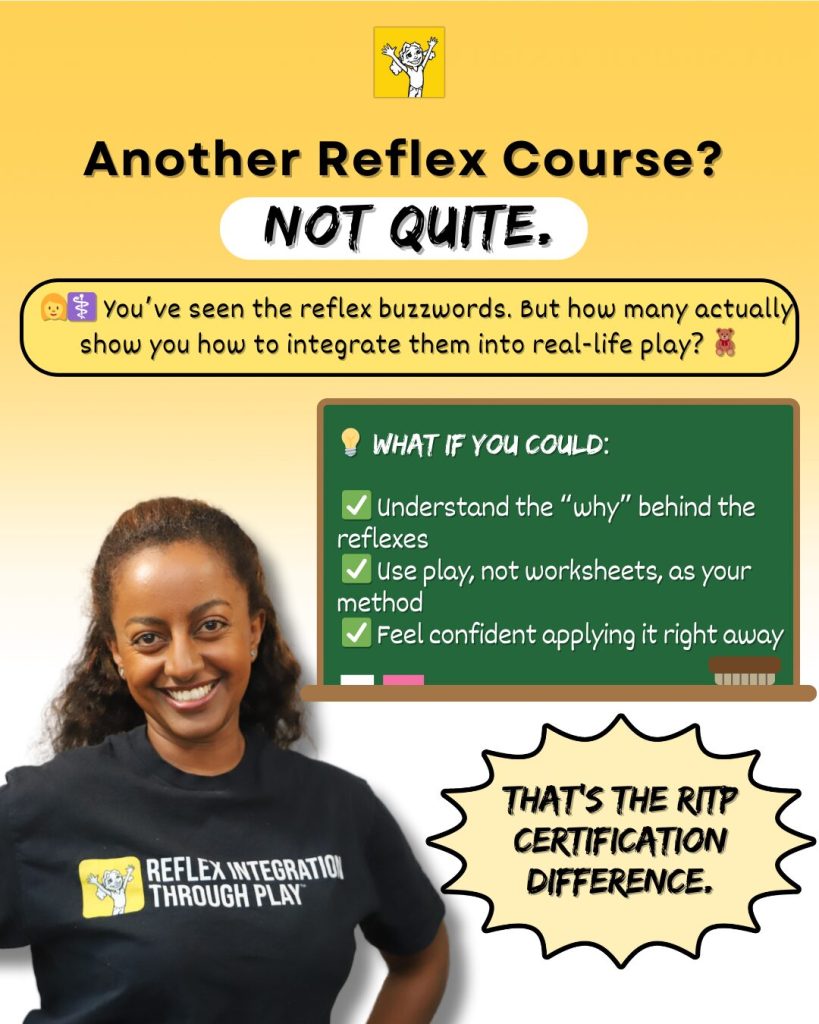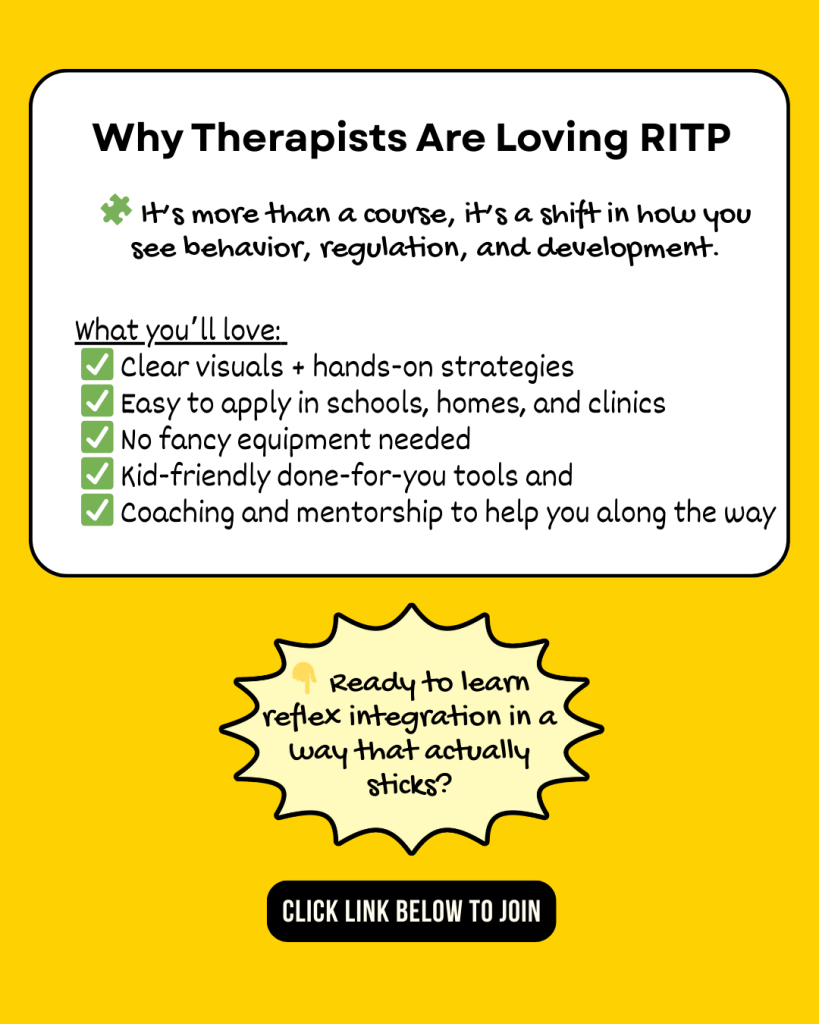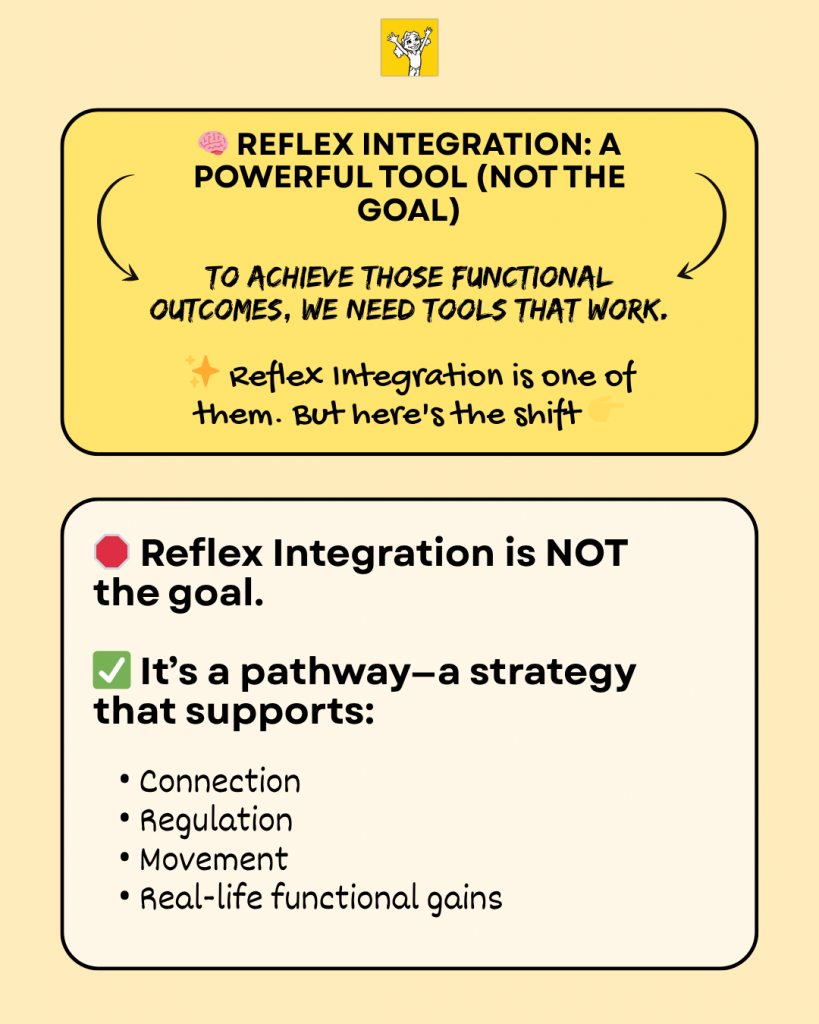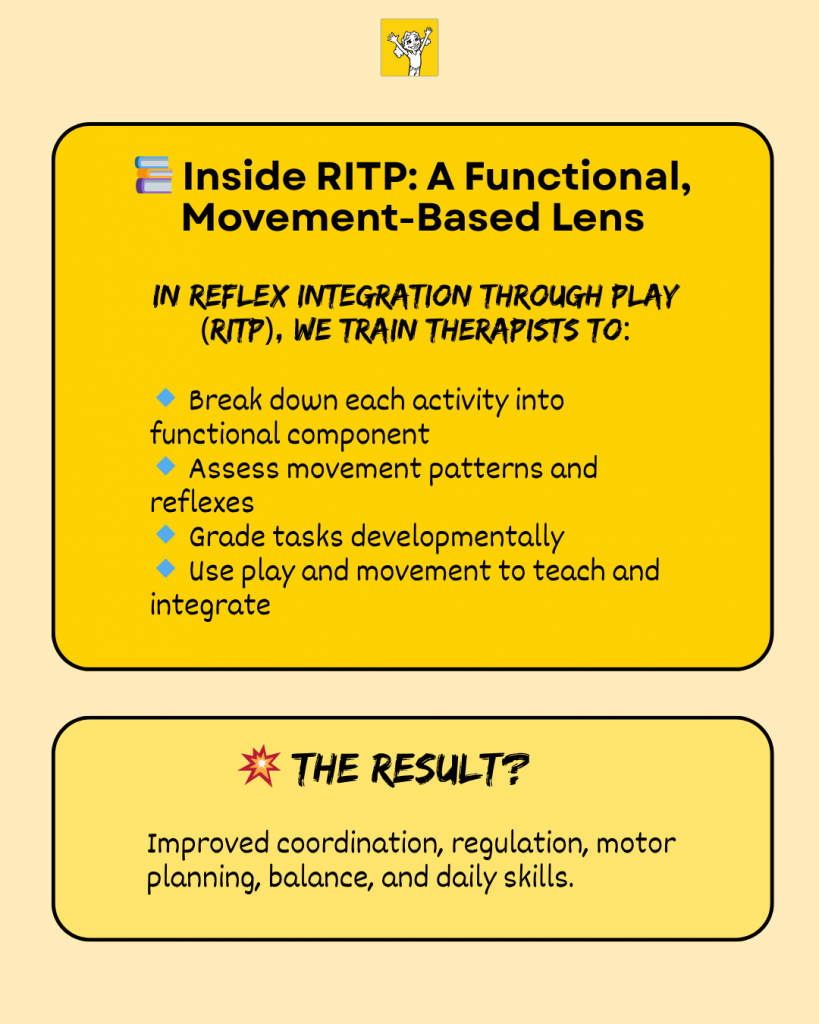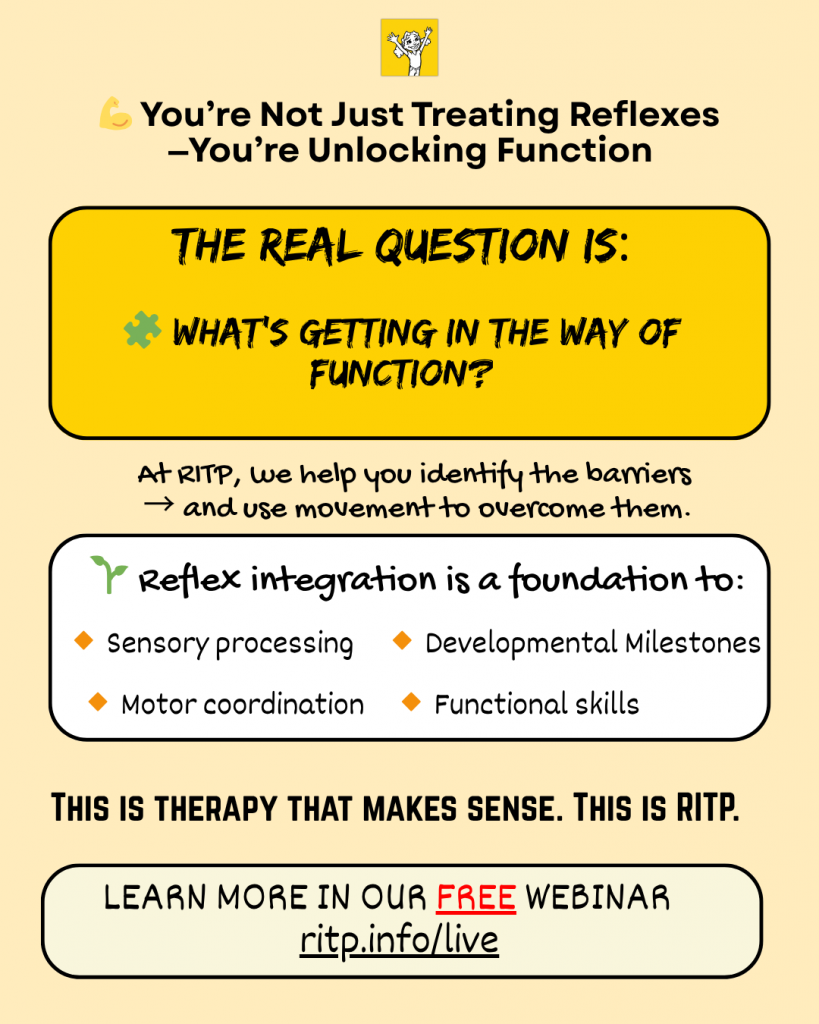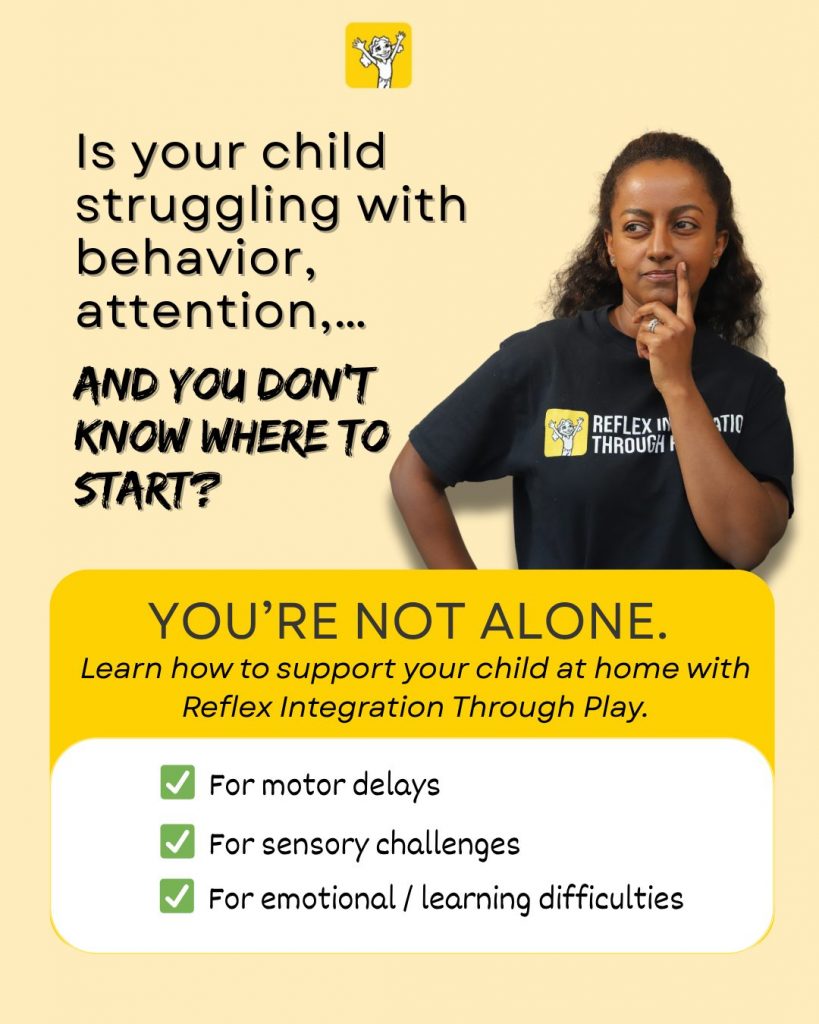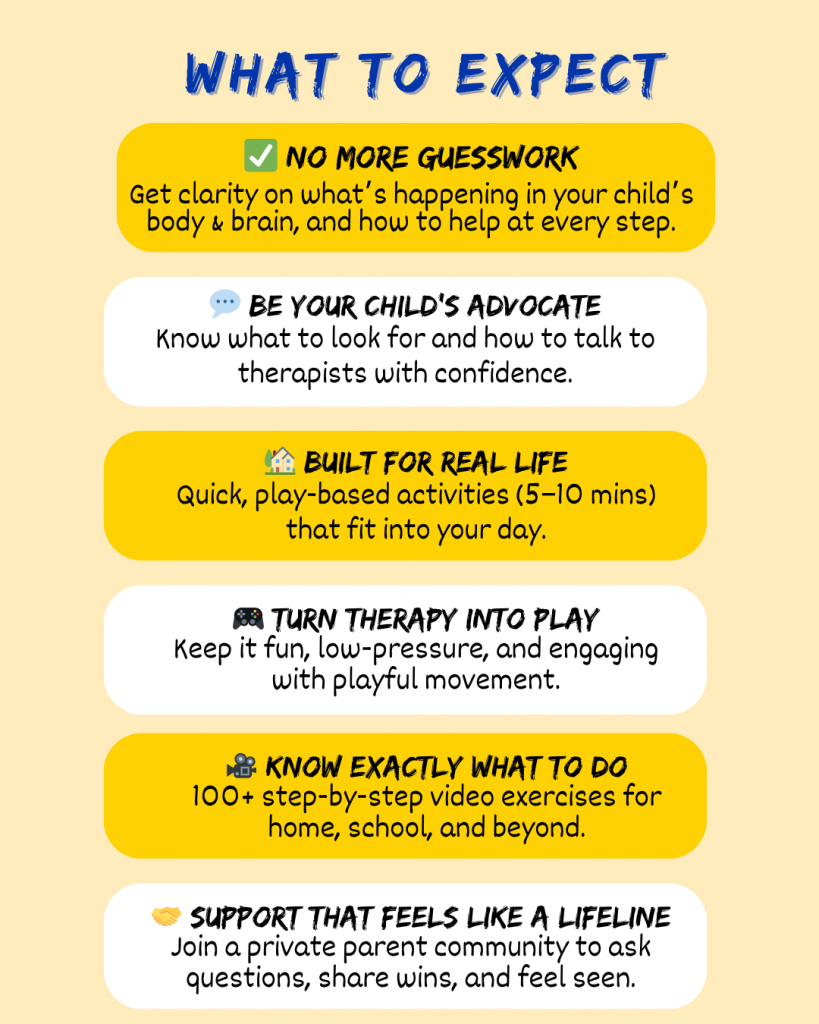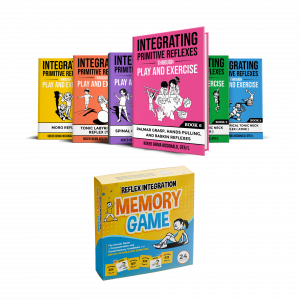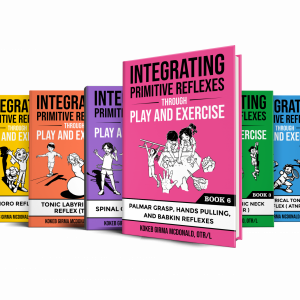In this week’s episode of the RITP Podcast, Kokeb sits down with Dr. Courtney Boitano, an occupational therapist who’s been practicing since 2007 and now serves as the Capstone Coordinator at San Jose State University.
Courtney’s career has always centered on pediatrics. She started in school-based practice right after graduating from USC, and today she balances her academic role with her own practice, OT Outside, where she works with kids in private schools and at home.
How RITP Made Its Way Into San Jose State
This conversation was a full-circle moment. Kokeb is an SJSU alum, and being invited back to guest lecture on reflex integration was something she had always hoped to do.
Courtney first came across Kokeb’s work through the OT Schoolhouse Podcast. She already had one of Kokeb’s books on her shelf, and after listening to the interview, she reached out. The timing worked perfectly; her students were in the middle of their pediatric clinic rotations, so they could immediately put what they learned into practice.
The resources Kokeb shared, RITP book series and the RITP Memory Game, quickly became part of the class. Students used them not only in one-on-one sessions but also in small group work at a local school.
“It was so great to see,” Courtney shared. “Their awareness grew as they started spotting retained reflexes during everyday activities.”
Why Reflex Integration Matters in OT Education
Most OT students only get a brief introduction to primitive reflexes in their coursework. It’s theory-heavy, with little chance to see how reflexes actually show up in functional play or daily living.
Bringing RITP into the classroom helped bridge that gap. Students were able to observe reflexes in real time, screen for them, and use play-based activities to address them.
“It’s not something passive,” Courtney explained. “Kids are active participants, and that’s what creates those lightbulb moments for students.”
Looking Toward the Future
Kokeb and Courtney also talked about the importance of preparing new grads for the transition into practice. Many OTs graduate with a license but without the confidence to apply specialized pediatric skills.
That’s why RITP is piloting a Bridge Program, a way to give students mentorship and training beyond the classroom so they feel supported as they step into their first jobs.
Courtney compared it to a mini-fellowship:
“It gives them that extra layer of mentorship and confidence, rather than feeling like they’re just thrown into managing a caseload on their own.”
Takeaways
For OT students: Slow down and observe. Observation is one of the most powerful tools you have.
For educators: Look for ways to connect theory to practice. Guest lectures and collaborations can be the missing link that helps students truly “get it.”

